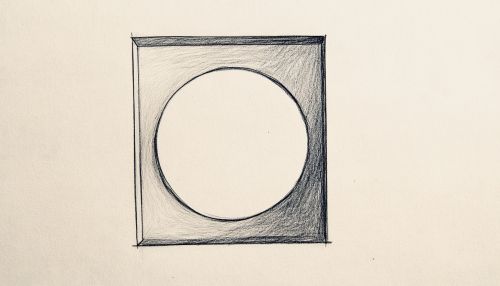Squaring the circle
Introduction
The problem of "squaring the circle" is a classical geometric problem that dates back to ancient Greece. It involves constructing a square with the same area as a given circle using only a finite number of steps with a compass and straightedge. This problem is one of the three famous ancient Greek problems of geometry, alongside trisecting an angle and doubling the cube. The challenge of squaring the circle has intrigued mathematicians for centuries, leading to significant developments in the field of mathematics, particularly in the understanding of pi (π) and the concept of constructible numbers.
Historical Background
The origins of the problem can be traced back to ancient Greek mathematicians such as Anaxagoras, who attempted to solve it while imprisoned. The problem was also addressed by other notable figures, including Hippocrates of Chios, who made significant progress by squaring certain lunes, a type of crescent-shaped figure. However, it was not until the 19th century that the problem was definitively proven to be impossible.
Mathematical Formulation
The task of squaring the circle can be mathematically formulated as follows: given a circle with radius \( r \), construct a square with the same area as the circle. The area of the circle is \( \pi r^2 \), and thus the side of the square must be \( \sqrt{\pi} \times r \). The challenge lies in the fact that \(\pi\) is a transcendental number, meaning it is not the root of any non-zero polynomial equation with rational coefficients. This property of \(\pi\) was proven by Ferdinand von Lindemann in 1882, effectively demonstrating the impossibility of squaring the circle using only a compass and straightedge.
The Role of Transcendental Numbers
The concept of transcendental numbers is crucial to understanding why squaring the circle is impossible. A number is transcendental if it is not algebraic, meaning it cannot be expressed as the solution to a polynomial equation with integer coefficients. The proof of \(\pi\)'s transcendence was a landmark in mathematics, as it not only resolved the problem of squaring the circle but also expanded the understanding of number theory and algebra.
Constructible Numbers and Tools
In the context of classical geometry, a number is constructible if it can be obtained from the integers using a finite sequence of operations involving addition, subtraction, multiplication, division, and the extraction of square roots. The set of constructible numbers is a subset of the algebraic numbers, which excludes transcendental numbers like \(\pi\). Therefore, the side length of the square, \( \sqrt{\pi} \times r \), is not constructible, rendering the problem unsolvable with traditional geometric tools.
Modern Perspectives and Implications
While the problem of squaring the circle is unsolvable in its classical form, it has inspired numerous mathematical explorations and innovations. The study of transcendental numbers and their properties has led to advancements in fields such as complex analysis, differential equations, and mathematical logic. Additionally, the problem has cultural and philosophical significance, symbolizing the limitations of human knowledge and the pursuit of the impossible.
See Also


